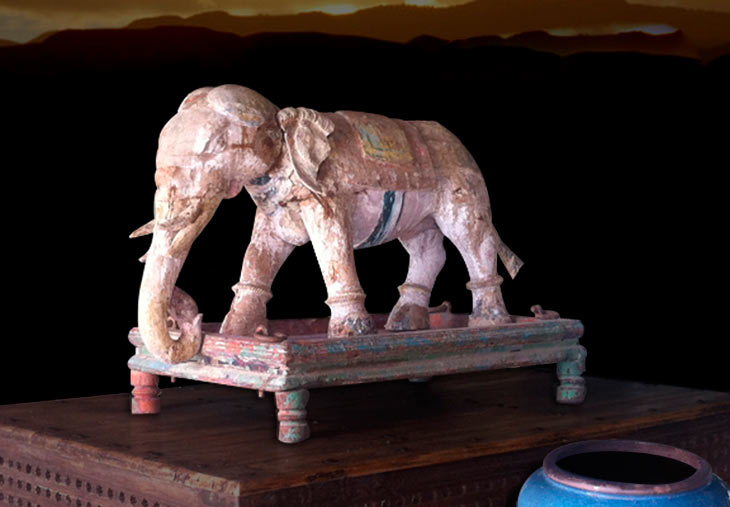GANESH
Today, from our 5-star luxury hotel Asia Gardens, we would like to celebrate with you yet another important festival from one of our favourite countries: the Ganesh Chaturthi in India.
The Ganesh Chaturthi festival is one of the most significant ones in India, especially in Maharashtra, in the mid-west. The festival lasts about 10 days and usually takes place between August 20th and September 15th. In the Hindu calendar, the month when the festival is held is called Bhaadrapada.
This festivity pays tribute to god Ganesha, son of Shiva and Parvati (whom we have mentioned in other posts before). Ganesha has a human body and an elephant head, something we will go into more detail later on. He is considered the patron of wisdom, prosperity and good fortune. Before starting up a new project, Hindus invoke god Ganesha as they believe his blessing to be essential.
The legend says that the way in which Ganesha ended up with a human body and an elephant head was rather curious, like pretty much everything that takes place in Asia. Shiva was at war fighting and his wife, Parvati decided to take a bath but there was no guard to protect her door. That is why she created a child to watch over her bedroom, preventing anyone from entering. She created him with the same sandalwood paste she used to bathe with and she placed him outside her door.
Shortly afterwards, Shiva came back home and tried to get into his wife’s bedroom with no luck because the “guardian child” was following orders not to let anyone in. Shiva got very angry and cut the child’s head off, which enraged Parvati who threatened him by saying she’d destroy the world. The only idea Shiva could come up with was to ask for the head of the first living being coming from the north to be brought to him (the north is associated to wisdom) which turned out to be an elephant. The elephant’s head was placed over the child’s body bringing him back to life, and they then proceeded to call him Ganesha.
The festival draws crowds of people who start preparing for it months before it takes place. There are cultural activities available, such as recitals, plays, and music performances in addition to fundraising for the needy as well as blood donation points. There are also flower and fruit offerings, mainly coconuts, and they then traditionally submerge the statue of the god in water.
People also make a sweet unique to this country, the modak, a paste made of rice and wheat flour and filled with coconut and a special type of sugar used in Asia. Hindu people bond even more during this type of festival and they show their most patriotic side.
We hope you have enjoyed learning a little more about India as much as we have. We look forward to seeing you at theAsia Gardens to help you experience Asian culturesd first hand.



